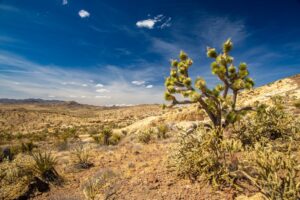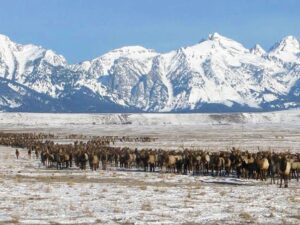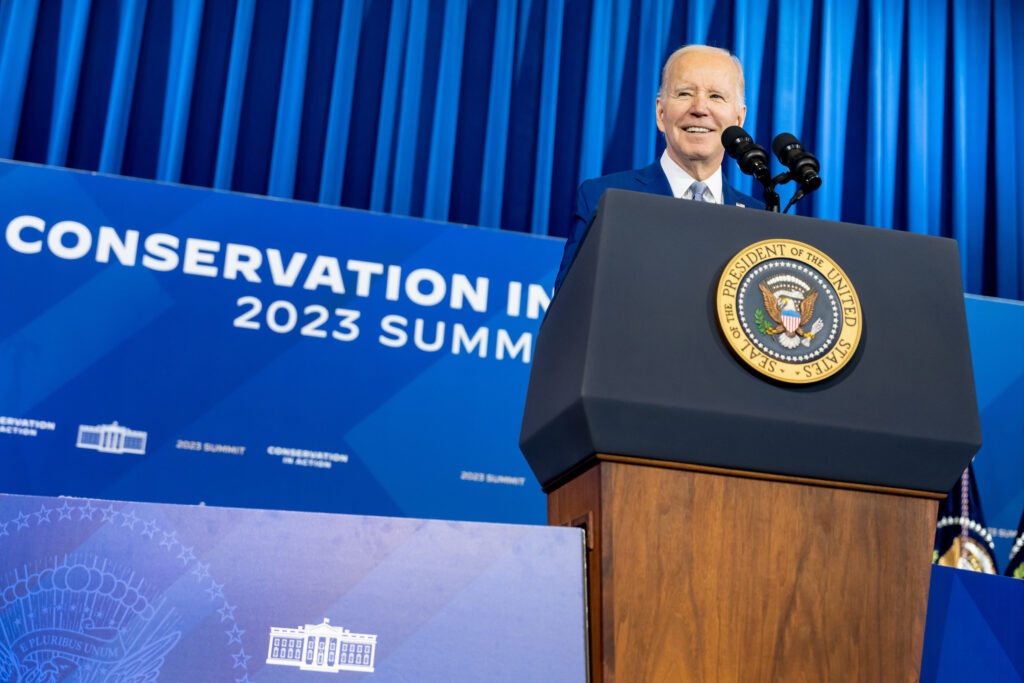The Center for Large Landscape Conservation applauds new national commitments to landscape and habitat-connectivity conservation

This past month was a historic one for landscape conservation and connectivity in the United States. Each week in March of this year, the Biden administration rolled out a major new initiative to conserve and restore lands, waters, and wildlife across large regions of the country. The recent slew of announcements demonstrates that our movement to think about and act on conservation at the landscape level has come of age.
The federal government is clearly recognizing the need to coordinate across agencies and boundaries, and to support partners on the ground in developing and implementing their shared vision for healthy communities and ecosystems. This is the heart of our work at the Center for Large Landscape Conservation.
The White House Conservation in Action Summit

The Center’s President & Founder Gary Tabor was invited to attend a landmark conservation summit at the White House on March 21st. The event featured remarks by President Biden, Secretary of the Interior Deb Haaland, Secretary of Agriculture Doug Vilsack, Council on Environmental Quality Chair Brenda Mallory, and Secretary of Commerce Gina Raimondo, among other leaders in conservation. These dignitaries announced a sweeping new set of landscape conservation initiatives, including the creation of new national monuments, additional support for Indigenous-led conservation, and actions to facilitate wildlife migration.
When Gary and our Senior Conservationist Rob Ament started collaborating on ecological connectivity policy work more than two decades ago, they had to explain to many people what a wildlife corridor was. In his speech at the Summit, President Biden publicly committed to “conserve wildlife corridors across agencies and across our entire landscape.” This is the first time in history a sitting U.S. President has publicly acknowledged the importance of corridors and connectivity. We’ve come a long way!

Key landscape and connectivity conservation announcements in the last month included:
- America the Beautiful Initiative Progress Report and Grants (3/1/23): For the second year in a row, the National Fish and Wildlife Foundation released a Request for Proposals for the America the Beautiful Challenge, with $116 million in competitive, federal grant funding for landscape conservation, restoration, and stewardship planning and projects. The Biden administration also released the 2022 America the Beautiful Report, highlighting progress made last year on landscape conservation, including efforts to “expand collaborative conservation of fish and wildlife habitats and corridors” as one the top priorities.
- Restoration and Resilience Framework (3/3/23): The Department of the Interior introduced the first-ever interagency framework for synergizing investments in ecological restoration and climate resilience across keystone landscapes. This framework emphasizes locally led, landscape-scale, partner-driven approach to restoration.
- President’s Budget Request (3/9/23): The President released his congressional budget request for Fiscal Year 2024. The Department of the Interior’s proposal includes requests for new dedicated investments in habitat connectivity, budget increases to expand ongoing wildlife migration research, and funding for numerous programs that support landscape conservation.
- Wildlife Corridors and Connectivity Guidance (3/21/23): The White House Council on Environmental Quality issued new guidance on integrating habitat connectivity considerations into federal agency planning and decisions. This new cross-departmental policy reflects the recommendations of the Center and our partners.
- Wildlife Crossings Pilot Program (3/21/23): The Federal Highway Administration announced that it will open applications for the new $350-million Wildlife Crossings Pilot Program soon. The Center played a leading role in the coalition that championed the creation of this new program and developed resources for interested applicants.
- Strengthening the Stewardship of America’s Public Lands (3/30/23): The Bureau of Land Management announced a new proposed policy on conservation and landscape health, including actions to “protect landscape intactness and habitat connectivity,” building upon their recent connectivity guidance. The comment period presents a once-in-a-generation opportunity for the Center and the public to help shape the future of public lands and ensure the agency effectively addresses the growing problem of habitat fragmentation.
- America the Beautiful Initiative Progress Report and Grants (3/1/23): For the second year in a row, the National Fish and Wildlife Foundation released a Request for Proposals for the America the Beautiful Challenge, with $116 million in competitive, federal grant funding for landscape conservation, restoration, and stewardship planning and projects. The Biden administration also released the 2022 America the Beautiful Report, highlighting progress made last year on landscape conservation, including efforts to “expand collaborative conservation of fish and wildlife habitats and corridors” as one the top priorities.
It is exciting for the Center and our partners to see large landscape conservation and habitat connectivity go mainstream, as a growing number of powerful people and institutions embrace the belief that drives our work: for our communities and ecosystems to be resilient, we must keep them connected. These new national policy developments create a bright future for conservation, restoration, and stewardship in the 21st Century—one guided by strategic coordination across sectors at scale and rooted in the principles of collaboration and inclusion.
We look forward to continuing to work with the Biden administration on these new initiatives and keeping our supporters and followers posted on major new developments.
Photo, top: President Joe Biden makes announcements about landscape connectivity at the White House Conservation in Action Summit – Photo from @POTUS on Twitter.



